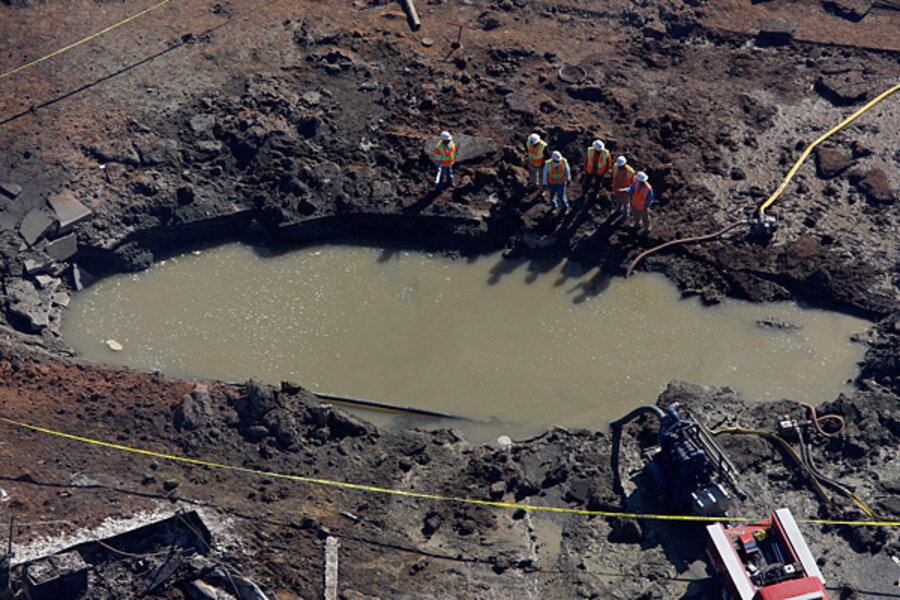Gas explosion, San Bruno: how authorities will investigate it
Loading...
| Los Angeles
The massive explosion Thursday evening in San Bruno, Calif., which killed at least four people and leveled 38 homes, was apparently sparked by a ruptured natural-gas line. Now, as authorities and residents deal with the aftermath of the gas explosion in San Bruno, attention is turning to the regulators and the regulations that govern the massive skein of pipelines moving natural gas in the United States.
The national regulatory program to assure the safe transportation of natural gas, petroleum, and other hazardous materials is administered by the Department of Transportation – specifically, the Pipeline and Hazardous Material Safety Administration, acting through the Office of Pipeline Safety.
These regulators oversee more than 2 million miles of pipelines throughout the United States, which provide 25 percent of the nation’s energy, according to the American Gas Association (AGA). More than 650,000 miles of pipeline were added between 1984 and 2004.
The regulations for the pipelines are specific. “There are very distinct and precise guidelines which lay out in detail the design formulas and yield strengths for these pipelines,” says Stuart Sklar, a Michigan attorney who specializes in litigating fire and explosion cases.
The National Transportation Safety Board is the agency responsible for investigating pipeline accidents, and it’s likely to have a long list of questions about the California incident. NTSB officials were headed to San Bruno, a city of about 42,000, which is about 12 miles south of San Francisco.
A key part of the investigation will be finding the precise point of the explosion. Additional things to look into, say Mr. Sklar and others, include: Has the pipe failed before? Was the explosion a result of faulty pipe fittings, corrosion, or nearby excavation?
“One key point of inquiry will be the maintenance record of pipelines in this area,” Sklar says. “When was the last leak survey? What do the records show? How well were they kept?”
Investigators will also undoubtedly look into reports that people smelled gas before the explosion.
Resident Tim Gutierrez told CNN that he smelled gas three weeks ago and told this to Pacific Gas and Electric officials who came to the scene for tests. After they left, he continued to smell gas, he said.
Lt. Gov. Abel Maldonado, who is acting governor while Gov. Arnold Schwarzenegger is on a trade mission in Asia, declared a state of emergency for San Bruno. The California Emergency Management Agency, he said, had opened a center in Sacramento to process claims. Fire engines and bulldozers were being donated by neighboring fire districts.
“It was like a big, brown fog going across the freeway,” says nearby Woodside resident Michael Newsom, who drove by San Bruno on Interstate 280 just minutes after the initial explosion. “It looked like a bomb had gone off, with steam blasting out of the middle and then lighting up the sky – seeming to light the smoke on fire.” The fireball, he says, was two to three times higher than any structure in town.
According to the AGA, reported explosions have declined 28 percent from 1986 to 2004. Natural gas causes an average of about 2,000 home fires a year, according to the National Fire Protection Association.





